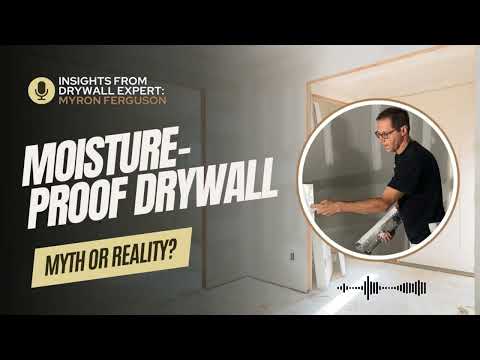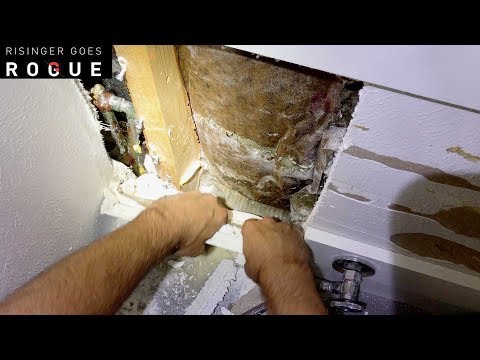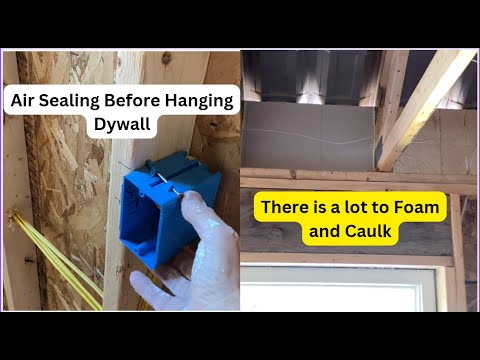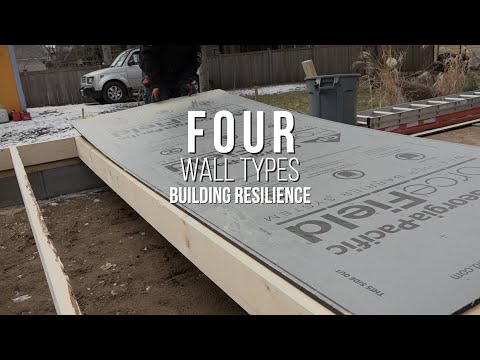Everything there is to know (well, almost) about blower door testing with a few engineer-y jokes along the way.
When we're doing the blower door test, this is not a test of "Is the window airtight? Is the wall airtight? Is the roof airtight?"
The blower door test methodology can't tell you that.
All it can tell you is what the system as a whole is. Now, you obviously build the system as a whole out of parts, and it's important to know whether your parts are tight or not—and you can specify that you can write that in the specs—but the reality is that what you really care about is "How tight is the building?"
There is no way that you can really specify that without testing in the field. Because houses are built in the field, and the joints are where the action is at.
So here's a basic concept (00:49). Blower doors were developed originally for houses, as most good energy efficiency technologies are—commercial debt is basically 15-20 years behind, and this blower door testing is a classic example.
R-2000 housing started blower door testing as a mandate setting real, measurable airtightness targets in 1984, and here we are in 2015 about 30 years later and we're saying, "Hey, maybe we should try this on commercial buildings."
That's not atypical. Similarly, things like insulation and thermal bridging, all that stuff came last to the commercial sector and so, I mention that with some glee because most people always think that commercial office towers are sophisticated—actually, no.
Houses are more technologically advanced than office buildings
Housing is often driving forward health and performance much faster and earlier than commercial buildings.
So, in this building as we'll demonstrate, this is the symbol for a blower. In this case, I am blowing air out of the house, and therefore, air has to leak into the house. And what I do is, measure the size of either that arrow or that arrow. Doesn't matter which, they're supposed to be the same size. And I also measure the pressure across the wall. Then I can actually say that at this pressure difference, I have this much flow.
The design of the test is such that the pressure is kept high enough that even if we have a bit of wind going on, or if the stack effect is causing warm air to rise, that the pressure imposed by the fan will be the dominant pressure.
All of the sides see the same pressure. The floor slab is almost never going to see that pressure in real life, but when we do the test, we assume that all sides see the same pressure.
So the test can't tell us how leaky the floor is compared to the roof, which is one of the drawbacks of the test. When I say it's a drawback, I'm speaking more academically.
The truth of the matter is we're building a billion-dollar-plus worth of houses a year in Hamilton-Burlington region and we have no frickin' clue how much they leak at all. So what we're talking about is 'Give us something —any numbers."
The first data point is the most important
As is true in most quality control, that first piece of data is the most valuable, you get the most value out of that first step. Would I like to have more information? Sure, but the most value I'm gonna get is that one data point that says how leaky is your building. That one really makes a difference.
What we're ideally hoping for is that you select assemblies and test protocols, so that when you do the rest, you can respond.
There are some places where they don't put the windows in before they put the brick in. They put the brick up before they install the windows. Guess how difficult it is to do an airtightness test with that type of a system? Then it truly becomes a post-mortem—you do the test and you say, "Yep, I'm screwed!"
And people don't want to spend a lot of money to hear that, so they'd rather not know. They'd rather believe—faith-based air sealing.
Construction sequence matters
I would argue that we're already seeing changes in the construction sequencing over time, that's being driven by quality control and if you were to look at any other manufactured product, "Well, that's a 'duh' " — you don't weld up the car frame, attach all of the interior trim and then inspect the welds. Right? That would be stupid, you have to design a system of assembly—where that membrane goes on, and the windows go in and you connect the roof to the wall (these are not trivial things to change the process) so that you can test it before they cover it all up with insulation and brick.
And that is changing and it's one of the drivers toward exterior air barriers in residential. you build your wood frame, you wrap your air barrier around the outside of that wood frame, and then you fix it at that time because if you do that, then you can get your water control done, and your air control done, and then the insulator guys and the poly guys and the drywall guys can go on and work anytime.
They won't go punching holes all the way to the outside—that actually isn't a big practical problem anymore because you're actually NOT punching holes through when you're doing plumbing and wiring, by putting the air barrier outside.
So it's a matter of sequencing and robustness. So here's a technology that arises to solve some of those problems—not all of them, we're not there yet—but it's working in that direction.











